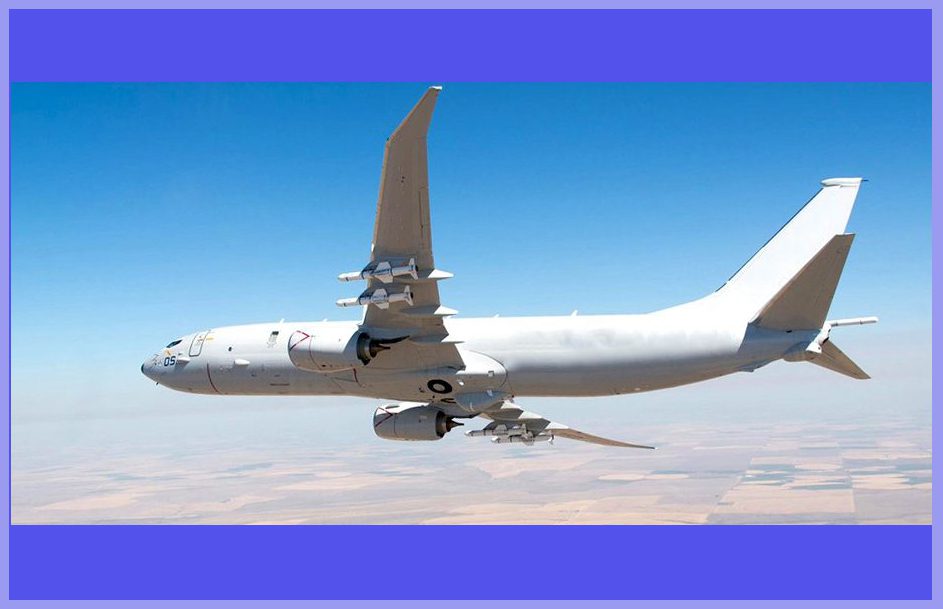Developed originally for the United States Navy, this aircraft represents a new pinnacle in maritime superiority, equipped with exceptional sensor capabilities. Its mission is to ensure the security of the seas by effectively countering potential threats, including the prowess to neutralize Chinese submarines.
The P-8I Poseidon excels in various critical maritime roles, including anti-surface warfare (ASUW), anti-submarine warfare (ASW), and intelligence, surveillance, and reconnaissance (ISR) tasks. It possesses the capability to monitor and deploy sonobuoys, transport torpedoes, Harpoon anti-ship missiles, and other potent armaments. Furthermore, the P-8I can seamlessly collaborate with additional equipment, exemplified by its interaction with the Northrop Grumman MQ-4C Triton and General Atomics MQ-9 Reaper maritime surveillance unmanned aerial vehicle (UAV).
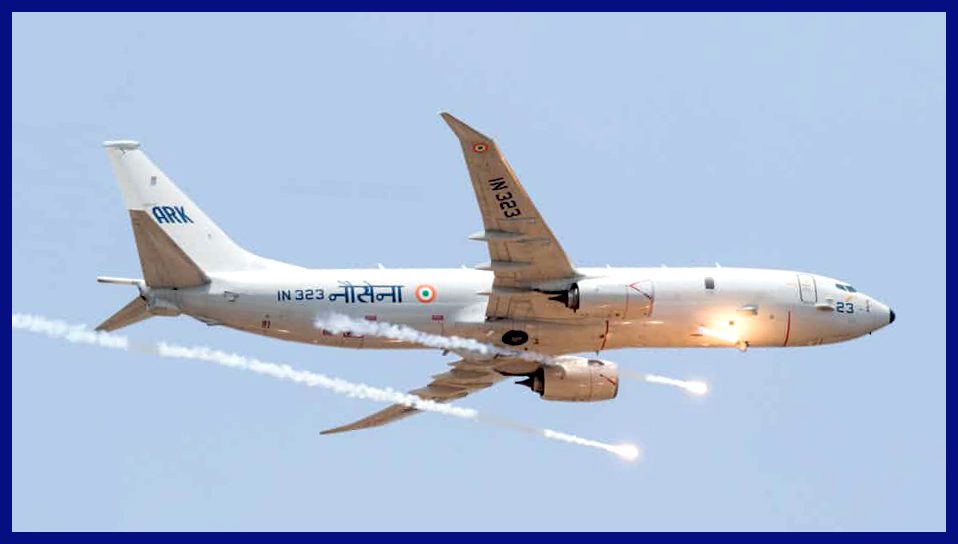
As of 2023, the P-8 aircraft has been adopted for service by various esteemed entities including the United States Navy, The Royal Australian Air Force, the Royal Norwegian Air Force, the Royal New Zealand Air Force, the Indian Navy, and the Royal Air Force of the United Kingdom. Furthermore, the German Navy and the Navy of the Republic of Korea have both initiated procurement processes for this exceptional aircraft. It’s noteworthy that a cumulative total of 160 P-8 aircraft have been successfully delivered up to this point.
Development of the Boeing P8 Poseidon
Since 1962, the United States Navy (USN) has been employing the Lockheed P-3 Orion, a turboprop ASW aircraft. In the 1980s, the USN initiated research into a potential replacement for the P-3, recognizing the limitations arising from increased weight and airframe fatigue life restrictions that led to reduced range and endurance. A key requirement for a new aircraft was the reduction of operating and support expenses, as outlined in the specification.
The pursuit for a replacement gained momentum in 2000 when a new search was initiated. Lockheed Martin presented the Orion 21, an advanced version of the P-3 aircraft. Boeing’s proposal, on the other hand, was rooted in the 737-800 airliner, serving as the platform for their offering. In an alternative approach, BAE Systems introduced the Nimrod MRA4, a British jet-powered maritime patrol aircraft, in a new-build configuration.

However, BAE later opted out of the competition in October 2002, acknowledging the political challenges of the bid without a production partner based in the US. Subsequently, on May 14, 2004, Boeing emerged as the victor of the Multimission Maritime Aircraft program due to its incorporation of the required advanced technology and a lighter airframe.
In June 2004, Boeing was awarded a development contract by the USN, with plans to incorporate at least 108 airframes into the project for the USN alone. This initiative also held the potential for additional orders from countries operating more than 200 P-3 Orion aircraft. The project’s total value was projected to reach a minimum of $15 billion. Among the primary subcontractors engaged were Raytheon, Northrop Grumman, Spirit AeroSystems, GE Aviation Systems, Marshall Aerospace and Defence Group, CFM International, BAE Systems, and Marotta. The aircraft officially obtained the P-8A designation on March 30, 2005, and its inaugural flight test was successfully conducted in 2009.

The Design Analysis of the Boeing P-8 Poseidon
The design of the P-8 Multi-mission Maritime Aircraft significantly enhances the U.S. Navy’s capabilities in antisubmarine (ASW) and antisurface (ASuW) warfare. Serving as the successor to the Nava’s P-3C fleet, the P-8 offers both strategic blue water and littoral undersea warfare proficiency, alongside armed intelligence, surveillance, and reconnaissance capabilities. Powered by the world’s most dependable high-bypass turbofan jet engine and featuring an open mission system architecture, the P-8 incorporates next-generation sensors to deliver exceptional performance in the modern era of the 21st century.
The open-architecture mission system, which is specifically tailored to the airborne maritime mission, presents the Navy with an unparalleled level of flexibility. This includes crucial interfaces to seamlessly integrate with various other platforms and systems. The deliberate focus on utilizing non-priority standards and protocols is aimed at ensuring the Navy’s capability to swiftly and cost-effectively incorporate future upgrades.

The U.S. Navy, Boeing, CFM International, Northrop Grumman, Raytheon and Smiths Aerospace are working as a seamless Government and industry team to develop the P-8A weapon system on schedule and cost. Their strategy for flawless programme execution includes integration of developmental and operational testing and extensive use of modelling and simulation.
Boeing is building the 737 and is responsible for system integration. CFM International is providing the CFM56-7B engines which are powering the aircraft. Northrop Grumman supports the electro-optical/infrared ( EO/IR ) sensor, the directional infrared countermeasures system, and the electronic support measures system. On the other side, Raytheon is providing upgraded APS-137 maritime surveillance radar and signals intelligence solutions. Smiths Aerospace provides supplies for both flight management and storage management systems.
Along the port side of the cabin, five operator crew stations have been designed—(two navy flight officers and three enlisted Aviation Warfare Operators/naval aircrewmen)—and they are positioned in a sideways row. However, none of the other crew stations have any windows, with the exception of two huge windows on either side of the forward cabin for observers. Behind the wing, a small bomb bay with storage for torpedoes and other items has been designed. The High Altitude Anti-Submarine Warfare Weapon Capabilities (HAAWC) and Air Launch Accessory (ALA) for the P-8 are designed to convert a Mark 54 torpedo into a glide bomb, which can be deployed from up to 30,000 feet in the air.
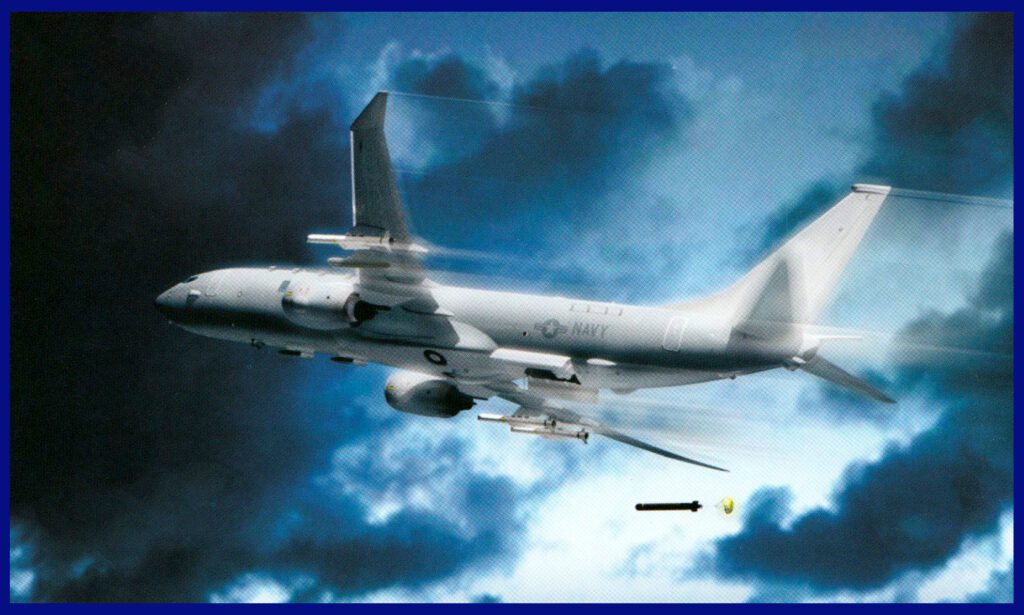
The Test Results Of P-8A Poseidon
On June 24, 2013, a noteworthy achievement was recorded for the P-8 as it conducted weapons integration testing. During this testing phase, the aircraft successfully launched a live AGM-84 Harpoon anti-ship missile, resulting in a precise hit on a low-cost modular target. Subsequently, on July 1, 2013, a report from the initial operational test and evaluation (IOT&E) affirmed that the P-8A had demonstrated operational effectiveness, and operational suitability, and was poised for fleet integration.
By that juncture, a total of six tests and nine low-rate initial production aircraft had already been delivered. Furthering its development, Boeing was awarded a substantial $2.04 billion contract on July 31, 2013, to manufacture 13 additional P-8As as part of the fourth low-rate initial production lot. This initiative was aimed at achieving a fleet comprising 37 aircraft by the culmination of 2016.
In January 2014, the P-8A initiated its full-rate manufacturing phase, overseen by the Naval Air Systems Command. This phase encompasses the incorporation of an integrated sensor suite as well as the integration of persistent anti-submarine warfare (ASW) capabilities within the increment 1 system. In 2016, during the increment 2 enhancements, the aircraft’s capabilities were expanded to include high-altitude anti-submarine weaponry, an automatic identification system, and the integration of multi-static active coherent acoustics. Subsequently, in 2020, the aircraft underwent increment 3 upgrades, which facilitated the execution of “net-enabled anti-surface warfare” operations.
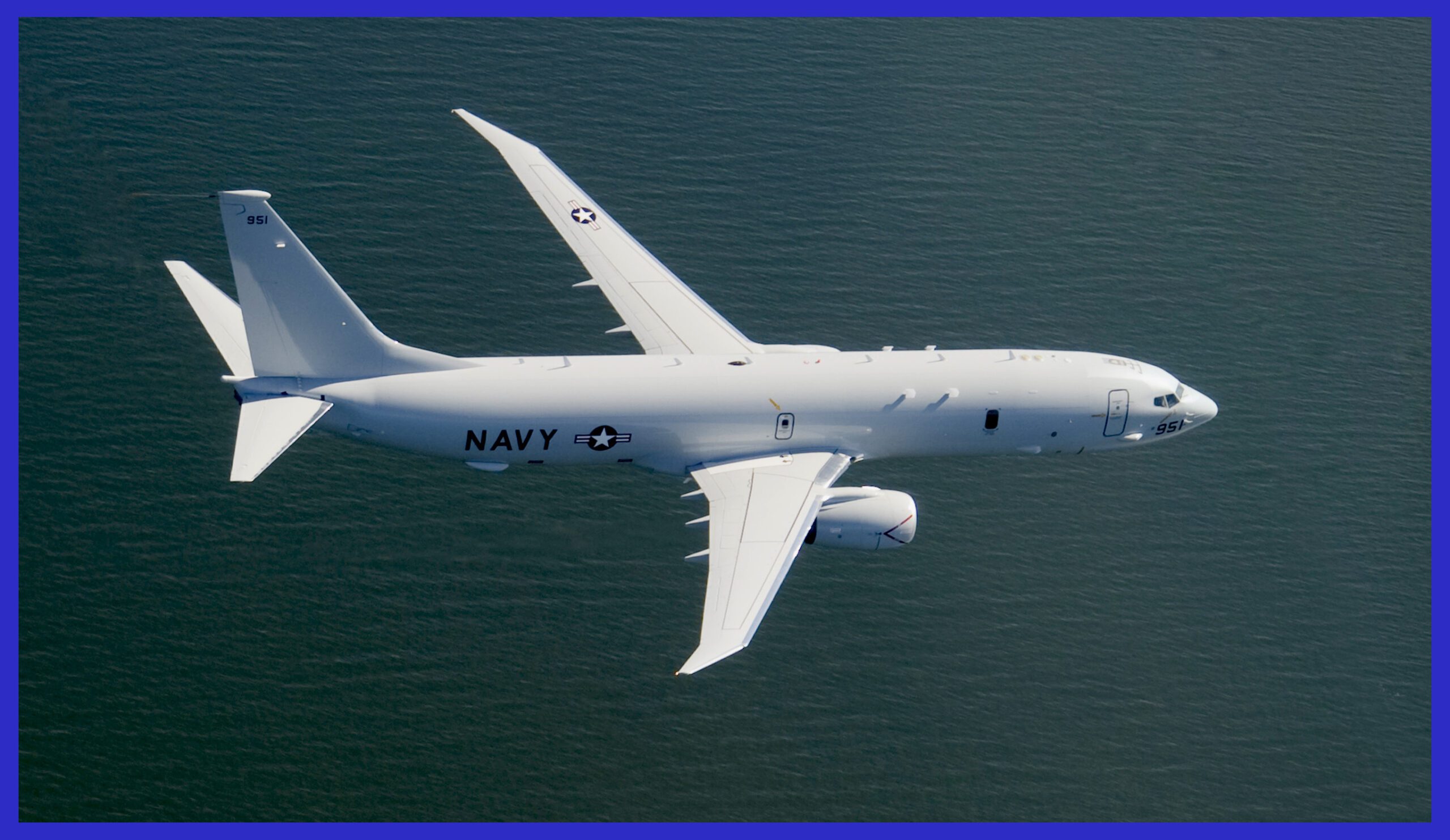
The Benefits of the P-8I Poseidon Multi-Mission Maritime Aircraft
- Dramatic capability leap with next-generation sensors
- Network-centric integration
- Unprecedented system flexibility and open architecture
- Designed for future growth and adaptability
- Reliable, proven, Boeing 737 platform with worldwide support
In January 2008, Boeing introduced the P-8I (where “I” stands for India) to the Indian Navy. This version, a tailored export iteration of the P-8A, encompasses several enhancements. Notably, it integrates a Telephonics APS-143 OceanEye aft radar and a magnetic anomaly detector (MAD), both of which were absent in the previous P-8A version. Recognizing these improvements, the Indian Ministry of Defence engaged in a significant agreement with Boeing on January 4th, resulting in a US$2.1 billion contract to acquire eight P-8Is.
The purpose behind this acquisition was to replace the ageing Tupolev Tu-142M maritime surveillance turboprop aircraft within the Indian Navy’s fleet. Of particular significance, India achieved the distinction of becoming the inaugural recipient of the P-8 aircraft in the international market. This procurement marked not only Boeing’s premier military transaction with India but also underscored the strengthening ties between the two entities.
Following that, in October 2010, India’s Defence Acquisition Council ( DAC ) approved the purchase of four additional P-8Is and In November 2019, the DAC again approved the procurement of six more P-8Is.
On November 19, 2020, the first aircraft was delivered to the Indian Naval Air Station INS Hansa in Dabolim, Goa. Based on reports, As of February 2022, all 12 P-8Is have been delivered to The Indian Navy. However, it is also estimated that ASTRA AAM can be integrated into it for self-defence.

Boeing P-8I Poseidon Specifications
- Crew: 2 & 5 crew at work stations
- Length: 129 ft 5 in ( 39.47 m )
- Wingspan: 123 ft 6 in ( 37.64 m )
- Height: 42 ft 1 in ( 12.83 m )
- Empty weight: 62,730 kg ( 138,300 lb )
- Max takeoff weight: 85,820 kg ( 189,200 lb )
- Powerplant: 2 × CFM56-7B27A turbofans, 27,300 lb ( 121 kN ) thrust each
- Max speed: 907 km/h ( 564 mph )
- Combat range: 7,500 km ( 4,700 mi ) 4 hours onboard station work ( for anti-submarine warfare mission )
- Service ceiling: 41,000 ft (12,496 m)
- Armament: In a total of 11 hardpoints ( 5 internal bay hardpoints and 6 external hardpoints for a variety of conventional weapons to carry such as _ AGM-84H/K SLAM-ER, AGM-84 Harpoon, Mark 54 torpedo, mines, depth charges )
Furthermore, seize this exclusive opportunity to acquire the exquisite large-scale 1/72 premium die-cast models of the iconic Lockheed F-104G Starfighter. These remarkable and iconic short-wing military jets boast an impeccable track record and are now available for purchase on AirModels with worldwide delivery. Click here now to secure your piece before the limited stock is depleted.
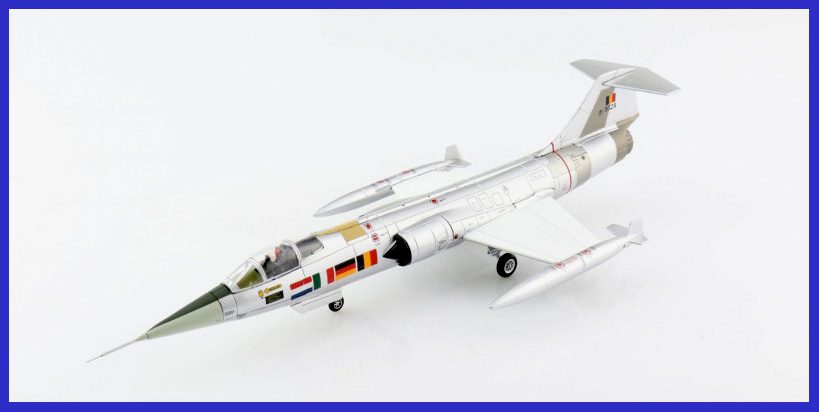
In conclusion, the Boeing P-8I Poseidon stands as a testament to the fusion of aerospace innovation and maritime security needs. Born from the reliable Boeing 737 framework, this advanced aircraft embodies a symphony of cutting-edge sensors, communication systems, and weaponry, purpose-built for the multifaceted demands of modern maritime operations. Its role in maritime surveillance, anti-submarine warfare, search and rescue, and intelligence gathering showcases remarkable versatility, redefining the boundaries of naval aviation.
By seamlessly integrating state-of-the-art technology with time-tested design principles, the P-8I Poseidon not only bolsters the Indian Navy’s capabilities but also underscores the significance of adaptability in safeguarding our oceans. As the maritime landscape continues to evolve, the P-8I serves as a steadfast guardian, epitomizing the marriage of engineering excellence with strategic foresight. In an era where maritime security is paramount, the Boeing P-8I Poseidon soars as an exemplar of innovation in action, dedicated to upholding the sanctity of our seas.
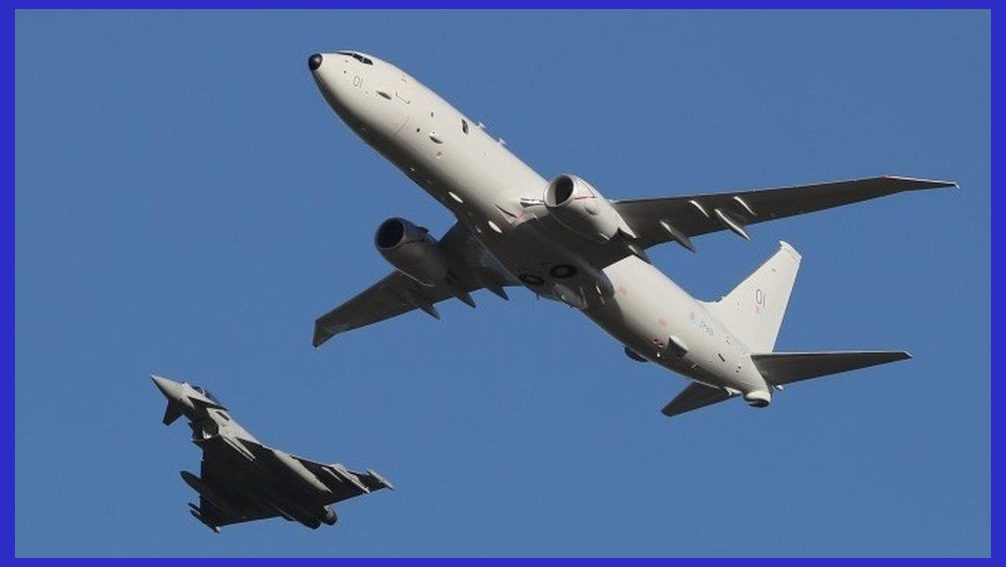
Important Announcement for Our Valued Readers!
After an article is published, it is possible that updates or changes may have occurred beyond the time of publication. Therefore, it is important to be aware that certain information in the article might be outdated. To ensure the most accurate analysis, it is highly recommended to verify the content with the latest sources available.
However, we are dedicated to delivering outstanding articles on military products and global updates. Maintaining quality and smooth operation requires resources. Your support sustains our efforts in providing insightful content. By purchasing high-quality products through our affiliated links, you help us keep our platform alive and acquire top-notch items. Your unwavering support is invaluable and inspires us to strive further.
We welcome your suggestions and requests for more information, as we value feedback from our readers. If there’s specific defence material or equipment not covered on our site, please share your request in the comments. We’ll strive to research and provide the required information. We sincerely thank you for your unwavering interest in our website, and we eagerly anticipate hearing from you! Enjoy your reading experience!
